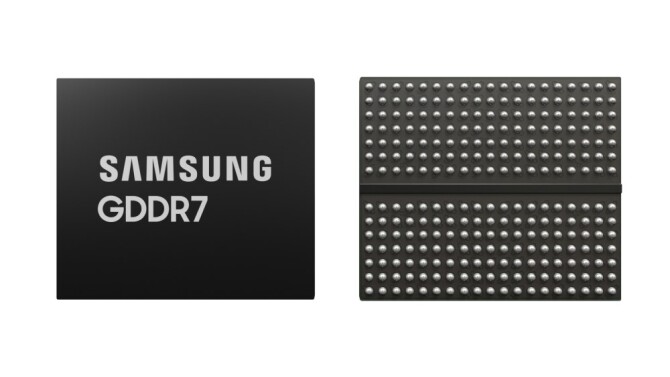Additionally, the corporation boasts of its outstanding data transfer rates.
There was an announcement made by Samsung in July 2023 that it had developed GDDR7 memory with next-generation GPUs in mind. The corporation is getting ready to release additional information about its most recent technological advancements at a symposium that is scheduled to take place in the year 2024. Based on the headline of the conversation, Samsung is going to debut GDDR7 memory that is insanely fast at 37 gigabytes per second. This leads us to believe that there is a low probability that it will be shipped in large quantities in the near future. With that being said, it is a glimpse into the future of gaming consoles and graphics cards of the next generation.
As reported by TechRadar, the IEEE Memory Symposium is scheduled to take place in San Francisco during the month of February. New information regarding Samsung’s GDDR7 memory will be disclosed for the very first time throughout the course of the conference. It is a presentation that is labeled as “A 16Gb 37 Gb/s GDDR7 DRAM with PAM3-Optimized TRX Equalization and ZQ Calibration.” The title of this presentation is a seductive one. As a result of the fact that the prior announcement made by the firm was essentially a press release, it is possible that this is the first time that we get official numbers on what Samsung has planned. Having said that, 37 gigabytes per second is probably the very maximum that it is capable of delivering, and it would be a tremendous step forward for graphics processing unit memory. The maximum data transfer rate of the GDDR6X that is currently in use is 24 gigabits per second.
What Samsung delivers to the conference is something that we will have to wait and see, but we are going to estimate that 37 gigabits per second is the pinnacle of its technology. In light of the fact that Samsung has previously indicated that the speed is approximately 32 gigabits per second, it would not come as a surprise to us if actual consumer GPUs were to be shipped with modules operating at that speed. On the other hand, Micron has stated in the past that it intends to achieve 36 gigabits per second with its GDDR7 technology, which indicates that a competition is developing between these two memory behemoths. SK Hynix is also going to be presenting at the conference, and according to Kitguru, it will be demonstrating GDDR7 at a speed of 35.4 gigabytes. This will make the competition a three-way fight.
According to Micron, the launch of its GDDR7 memory is scheduled to take place in the first half of 2024; however, there are no major GPU launches anticipated for that time period, unless AMD surprises us. During the same time period, it is anticipated that Samsung will introduce its very own GDDR7 chips to the market later on in this year. This would be a perfect match for the introduction of Blackwell that is anticipated to take place by Nvidia. Nvidia, on the other hand, has generally utilized Micron memory, and AMD has historically utilized Samsung and SK Hynix memory in its graphics processing units (GPUs).
Our knowledge of Samsung’s next-generation memory will be expanded in the near future. It appears that the next graphics processing units (GPUs) from AMD and Nvidia will be able to reap the benefits of the technology’s launch from numerous suppliers in the year 2024. The promise is that it will provide significant gains in memory bandwidth while at the same time enabling clock speeds to remain unchanged as a result of advances in signaling mechanisms.

